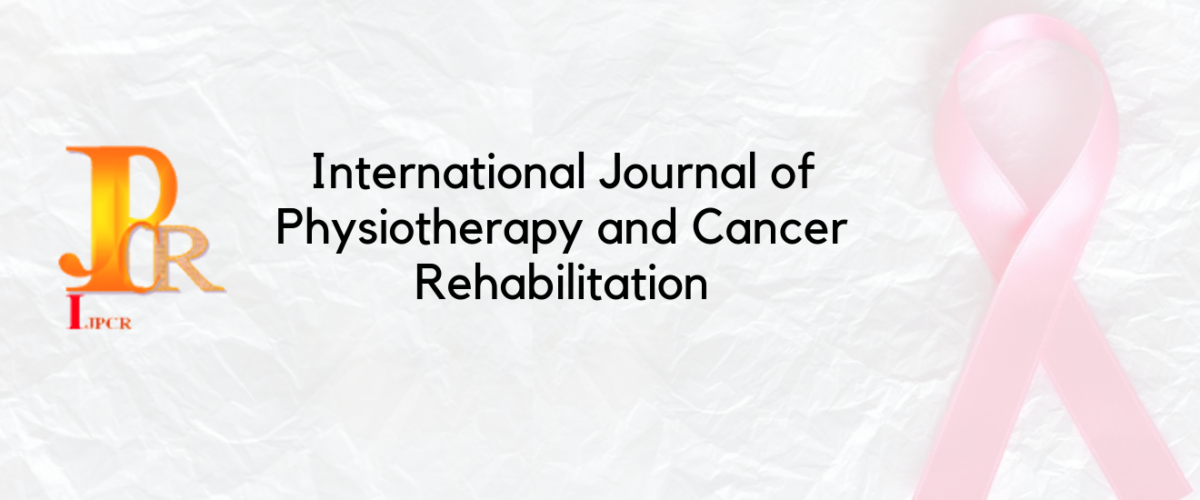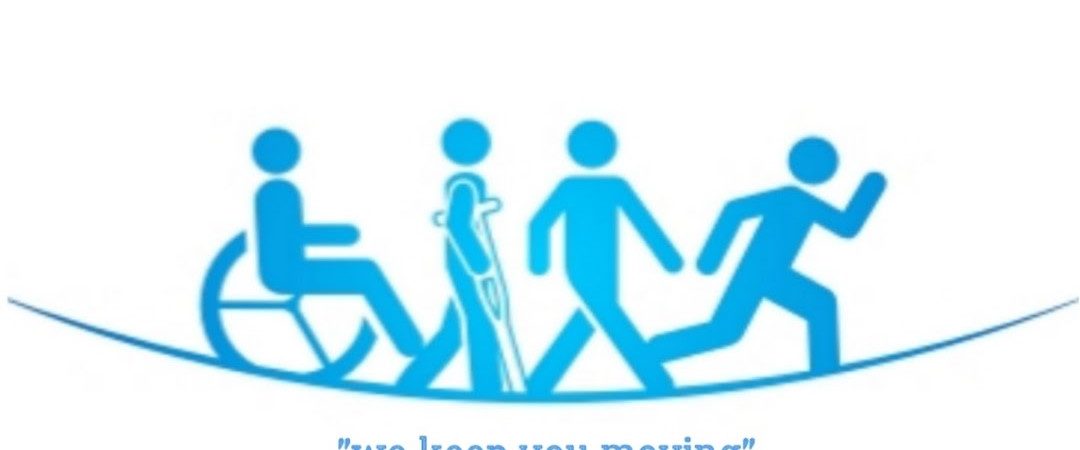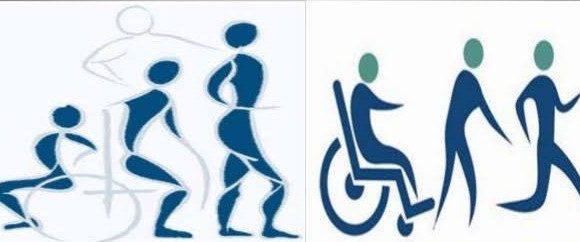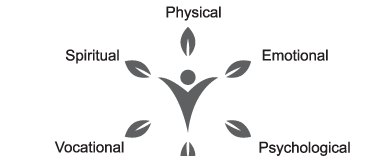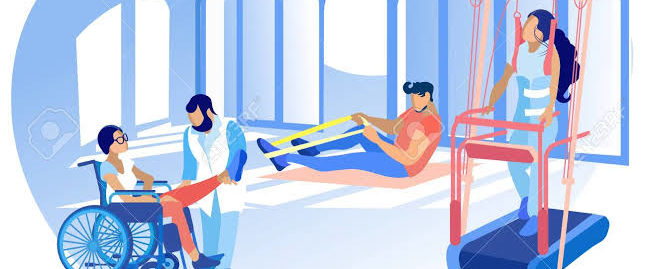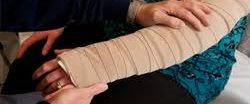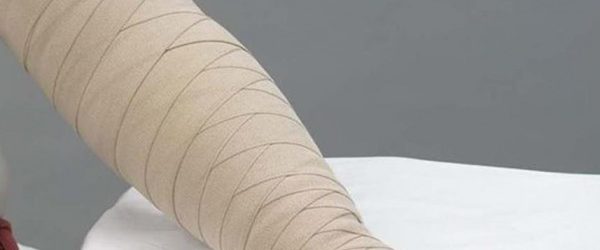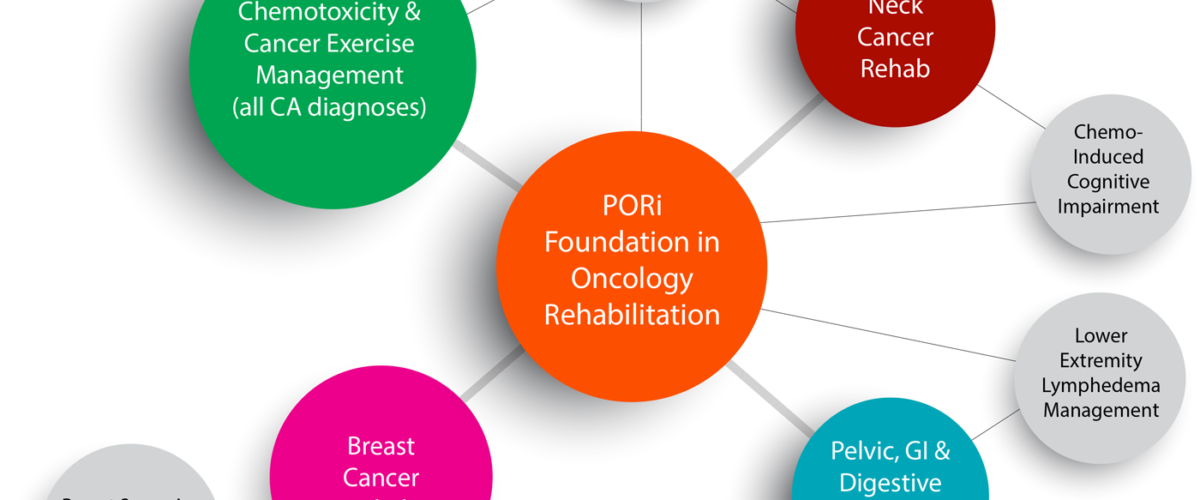“EFFECTIVENESS OF MIRROR THERAPY WITH CONVENTIONAL THERAPY VERSUS CONVENTIONAL THERAPY ALONE TO IMPROVE FUNCTIONAL ACTIVITY OF UPPER EXTREMITY IN CHRONIC STROKE PATIENTS: A COMPARATIVE STUDY” – Neelam Nimawat
“EFFECTIVENESS OF MIRROR THERAPY WITH CONVENTIONAL THERAPY VERSUS CONVENTIONAL THERAPY ALONE TO IMPROVE FUNCTIONAL ACTIVITY OF UPPER EXTREMITY IN CHRONIC STROKE PATIENTS: A COMPARATIVE STUDY”
Neelam Nimawat
ABSTRACT
BACKGROUND: Stroke is one of the major cause of death and disability in adults worldwide. A stroke is defined by the World Health Organization (WHO) as a syndrome of ―rapidly developing clinical symptoms and/or signs of focal (or at times global) disturbance of cerebral function lasting more than 24 hours (unless interrupted by surgery or death), with no apparent cause other than vascular origin.‖ The majority are ischemic, secondary to arterial occlusion by in-situ thrombus or embolus. Stroke affects postural and functional movements, paresis is present in hemibody or one side of upper and lower limbs. More than 80% of survivors have paresis of upper limb and 30 to 60% of these patients cannot use the paretic upper limb which compromises their independent and quality life. Mirror therapy is a simple non-invasive technique for the treatment of hemiparesis after stroke. Visual feedback is supposed to be used to match and recalibrate proprioceptive sensory informations or input that may be impaired to stroke. The present investigation was planned to find out the effectiveness of mirror therapy with conventional therapy versus conventional therapy alone on upper limb activities in chronic stroke patients
AIMS AND OBJECTIVES: To study the effectiveness of mirror therapy with conventional therapy versus conventional therapy alone on upper limb activities in chronic stroke patients.
METHODOLOGY: Thirty chronic stroke patients with upper limb involvement were randomly selected according to inclusion and exclusion criteria and were divided into two groups – Group A and Group B. Both the groups were assessed for the upper limb functional status using fugl meyer assessment – upper extremity and upper limb motor assessment using Motor assessment scale – upper limb. These parameters were assessed before the start of the program as pre-test values and at the end of 12 week as post-test values. Group A received mirror therapy with conventional therapy and Group B conventional therapy alone.
RESULT: The mean age of group A was 59.20 years and group B was 59.80 years. The statistical analysis correlates the study by proposing that groups taken for study 2 either group A and B showed significant effect in improvement in upper limb functions of chronic stroke patients. The group A had higher significance when compared to group B. The mean improvement in upper limb function scores of FMA-UE was 29.20 and 16.53 in group A and B, respectively. The mean improvement in motor assessment measured by MAS-UL was 14.73 and 10.07 in group A and B, respectively. It was resulted that mirror therapy with conventional therapy had a superior effect over conventional therapy alone.
CONCLUSION: This study concluded that mirror therapy with conventional therapy had effective technique in improving upper limb functions in chronic stroke patients.
KEY WORDS: Stroke, upper limb function, Mirror therapy, Conventional therapy
INTRODUCTION
Stroke is one of the major causes of death and disability in adults worldwide. The majority of survivors show some degree of recovery but more than 50% still present with some sensory and motor deficits and only 30% of these patients can return to work during the first year post-stroke. Stroke affects postural and functional movement, paresis is present in hemibody or one side of upper and lower limbs. More than 80% of survivors have paresis of upper limb and 30 to 60% of these patients cannot use the paretic upper limb which compromises their independent and quality life.
Stroke is defined by the World Health Organization (WHO) as a syndrome of ―rapidly developing clinical symptoms and/or signs of focal (or at times global) disturbance of cerebral function lasting more than 24 hours (unless interrupted by surgery or death), with no apparent cause other than vascular origin.‖ The majority are ischemic, secondary to arterial occlusion by in-situ thrombus or embolus.
A stroke is the disturbance in blood supply, when blood vessel ruptured or blocked by a clot, which cuts off the oxygen supply and nutrients to the brain, causing damage to the brain tissue. Stroke is a clinical syndrome divided into two broad classifications such as ischemic stroke which is caused by sudden occlusion of arteries supplying the brain, either due to a thrombus at the site of occlusion or formed in another part of the circulation. It accounts for 50% to 85% of all strokes worldwide. A haemorrhagic stroke occurs due to injury to a blood vessel wall and formation of clot. It accounts for 15% of all strokes worldwide.
Stroke is due to upper motor neuron lesion and is characterized by the motor paralysis or paresis, perceptual problems, altered balance, cranial nerve problems, reflex sympathetic dystrophy, shoulder subluxation, gait problems and spasticity.
Stroke was the second most frequent cause of death after heart diseases, accounting for 6.4 million deaths, in which ischemic stroke resulted in 3.3 million deaths and hemorrhagic stroke resulted in 3.2 million deaths. Almost half of the 4 stroke patients live less than one year and two thirds of strokes occurred in those over 65 years old. Worldwide stroke is the fourth leading cause of disability. According to the World Health Organization, each year 15 million people worldwide suffer from stroke. In that nearly 5 million people die and another 5 million people are left permanently disabled. It forecasts that disability-adjusted life years lost to stroke, will rise from 38 million in 1990 to 61 million in 2020. The prevalence of new or recurrent stroke is nearly 750,000 in each year and above 4 million is living with the residual effects of stroke which includes paralysis and disability
In India, stroke is one of the leading causes of death and disability. The prevalence rate ranges from 84-262/100,000 in rural areas and 334-424/100,000 in urban areas. Stroke signified 1.2% of total deaths in India
Traditional rehabilitation programs for improving functional use of the arm, commonly used are compensatory strategies, splinting, task riented practice strategies, constraint induced movement therapy, electro-myography (EMG) biofeedback, acupuncture, strengthening exercises and various approaches like neuro-developmental therapy (NDT), proprioceptive neuro-muscular facilitation (PNF), Rood‘s approach, Brunnstrom approach, Vojta approach. There are now multiple approaches, many relating to brain plasticity, including: (a) Use of a body part enhances its function, for example, by constraint-induced movement therapy, neuromuscular electrical stimulation (NMES), Robot aided movement therapy and virtual reality. (b) The ipsilateral hemisphere can contribute to motor control; bilateral, symmetrical arm movement training may help on this basis. (c) Sensory stimulation enhances plasticity. It can be given through transcutaneous electrical stimulation or acupuncture. (d) Reduction of inhibition enhances plasticity. This has been demonstrated to be useful for rehabilitation utilizing transient deafferentation. (e) Many pharmacological agents can induce plasticity.
Mirror therapy is a simple non-invasive technique for the treatment of hemiparesis after stroke. Visual feedback is supposed to be used to match and recalibrate proprioceptive sensory informations or input that may be impaired to stroke.
Mirror therapy is relatively new therapeutic intervention for stroke patients. It is a simple, inexpensive and, most importantly, patient directed treatment that may improve upper-extremity function. It involves performing movements of unimpaired limb while watching its mirror reflection superimposed over the (unseen) impaired limb (motor imagery). It creates a visual illusion of enhanced movement capability of the impaired limb.
Many researchers used conventional therapy, mirror therapy and constraint induced movement therapy program to recover upper extremity function. Mirror therapy is an evidence based program in an enriched environment to increase the use of the affected upper extremity. Many results recommended that Mirror therapy may be a successful method of improving function and use of the affected arms of patients exhibiting learned non-use. However, many studies were done on stroke for improving the upper extremity functions but there is lack of evidence of studies on Mirror therapy, hence keeping the above facts in view, the present investigation was planned to find out the effect of Mirror therapy on upper extremity functions in chronic stroke patients.
NEED OF THE STUDY
There is a need to incorporate simple, easy, economic, patient directed and effective treatment techniques to enhance recovery following stroke. Current rehabilitation techniques focus on physical therapy, using guided limb range of motion exercises, manipulation, stretching exercises, strengthening exercises, cryotherapy and taskoriented training. These exercises combine passive and active movement in an attempt to rebuild neuronal connections damaged by the stroke. Adding mirror therapy to traditional therapy enlists visual stimulation showing improvement in motor function.
Previous research has shown that mirror therapy can improve the motor function of acute and sub-acute stroke patients with mild to moderate impairment. Moreover, interventions involving stroke survivors with upper limb paresis have been shown to provide limited motor improvement in the acute or sub-acute phase. But no evidence has found to compare the effectiveness of mirror therapy with conventional therapy and conventional therapy alone to improve functional activity of upper extremity in chronic stroke patients. Therefore, present study was conducted to evaluate the comparative effectiveness of mirror therapy with conventional therapy and conventional therapy alone to improve functional activities of upper extremity in chronic stroke patients.
AIMS AND OBJECTIVES OF THE STUDY AIM OF THE STUDY:
The aim of the study to compare the effectiveness of mirror therapy with conventional therapy versus conventional therapy alone to improve functional activities of upper extremity in chronic stroke patients.
OBJECTIVES OF THE STUDY:
The main objectives of the study are:
1. To study the effectiveness of mirror therapy with conventional therapy to improve functional activities of upper extremity in chronic stroke patients.
2. To study the effect of conventional therapy to improve functional activities of upper extremity in chronic stroke patients.
3. To compare the effect of mirror therapy with conventional therapy and conventional therapy alone to improve functional activities of upper extremity in chronic stroke patients
HYPOTHESIS
ALTERNATIVE HYPOTHESIS
It states that there is significant difference between mirror therapy with conventional therapy and conventional therapy alone to improve functional activities of upper extremity in chronic stroke patients.
NULL HYPOTHESIS
It states that there is no significant difference between mirror therapy with conventional therapy and conventional therapy alone to improve functional activities of upper extremity in chronic stroke patients.
METHODOLOGY
1. STUDY DESIGN: Comparative study.
2. SAMPLE SIZE: 30 chronic stroke patients with of upper limb functional involvement.
3. SAMPLING DESIGN: Randomized. 4. STUDY CENTRE: OPDs of JRNRV college of Physiotherapy, Udaipur, Rajasthan.
5. DURATION OF THE STUDY:
- 12 weeks.
- Six days per week
- One hours per day
6. SELECTION CRITERIA
i. INCLUSION CRITERIA:
Patients with chronic stroke duration between 6 months to 2 years.
Age group: 40-75years.
Both genders.
Patients with right or left upper extremity hemiparesis.
Patients who have 10 degree active wrist extension, 10 degree active thumb abduction and 10 degree active extension of any two digits of affected hand.
ii. EXCLUSION CRITERIA:
Post stroke hemiparesis patients with cognitive disturbances.
Chronic spastic hemiplegic patients.
Age above 75 years and below 40 years.
Hemiplegia or hemiparesis due to head injury.
Any musculoskeletal condition of upper limb.
Psychosomatic patients.
Visual and hearing problem
patient with cardiopulmonary condition
PROCEDURE
Thirty chronic stroke patients was randomly selected according to inclusion and exclusion criteria and divided into two groups – Group A and Group B. The nature and duration of the study was explained to all the participants and written consent was obtained from each participant. The demographic and clinical data were collected from each participant. Pre-test level of upper extremity function was assessed through Fugl meyer assessment scale – Upper extremity and Motor Assessment Scale – Upper Limb with observation checklist, among interventional group on first day of the study. Mirror therapy and conventional therapy was demonstrated to group A and conventional therapy was demonstrated to group B. Participants of both the groups were practiced the techniques six days per week for twelve weeks. Post-test data was collected at the end of 12th week.
INTERVENTION:
In present study, Group A treated with mirror therapy with conventional therapy and Group B treated with conventional therapy. Participants of both the groups were received the selected treatment for 12 weeks.
TREATMENT PARAMETERS:
Duration of treatment: One hours per day
Frequency of treatment: Six days per week.
TECHNIQUES:
Group A: Mirror therapy with conventional therapy
The group A was treated with mirror therapy with conventional therapy.
- Mirror therapy:
Patient should be in front of mirror and practiced the following exercises by affected upper extremity:
- Range of motion exercises:
- Task or Activities:
2. Conventional Therapy:
i. Range of motion exercises:
ii. Stretching Exercises:
iii. Strengthening Exercises:
iv. Cryotherapy:
Group B: Conventional therapy
The group B was treated with Conventional therapy. The following exercises were given as conventional therapy:
i. Range of motion exercises:
ii. Cryotherapy:
iii. Stretching Exercises:
iv. Strengthening Exercises:
v. Task or Activities:
RESULT AND DATA INTERPRETATION
The present study was carried out to compare effectiveness of mirror therapy with conventional therapy versus conventional therapy alone to improve functional activity of upper extremity in chronic stroke patients. The level of upper limb functions and motor assessment was assessed by Fugl Meyer Assessment – Upper Extremity and Motor Assessment Scale – Upper Limb, respectively
MEAN IMPROVEMENT IN ALL THE PARAMETERS BETWEEN GROUP A AND GROUP B:
TABLE:
| Group | N | Mean | Group | N | Mean | ||
| FMA-UE | A | 15 | 29.20 | MAS-UL | A | 15 | 14.73 |
| B | 15 | 16.53 | B | 15 | 10.07 |
GRAPH:
INTERPRETATION:
The above table shows the mean improvement in upper limb functional scores of FMA-UE was 29.20 in Group A and 16.53 in Group B. It was resulted that Group A treated with mirror therapy with conventional therapy had a superior effect in upper limb function scores over Group B treated with conventional therapy in upper limb function of chronic stroke patients.The above table shows the mean improvement in upper limb assessment scores of motor assessment scale – upper limb was 14.73 in Group A and 10.07 in Group B. It was resulted that Group A treated with mirror therapy with conventional therapy had a superior effect in upper limb function scores over Group B treated with conventional therapy in upper limb function of chronic stroke patients. Thus, the above study resulted that Group A treated with mirror therapy with conventional therapy had a superior effect in upper limb functions of chronic stroke patients.
DISCUSSION
The present study has done to evaluate the effectiveness of mirror therapy with conventional therapy versus conventional therapy alone to improve functional activity of upper extremity in chronic stroke patients.
In present study, total 30 chronic stroke patients with impaired upper limb functions were selected randomly and equally divided into two groups. Pre-test data were collected at the beginning of the study and post-test data were collected at the end of 12th week. The data were statistically analysed and comparing Group A and Group B, both the group showed significant improvement in upper limb functions, but Group A not only showed greater improvement but also recorded a high degree of consistency with ‘t’ values and as seen in graph showing mean improvement of both the parameters, there is greater improvement in mean of upper limb function and upper limb motor assessment in Group A.
In present study, Group A had a mean age of 59.20 years and Group B had a mean age of 59.80 years.
The study was to comparing the mirror therapy with conventional therapy and conventional therapy alone in improving upper limb motor assessment of chronic stroke patients. The upper limb motor assessment score of each stroke patient was assessed by using motor assessment scale – upper limb (MAS-UL) before the start of the treatment as pre-test values and at the end of 12th week as post-test values. The mean of pre-test and post – test values were 6.60 and 21.33, respectively in group A and 6.26 and 16.33, respectively in group B. The mean improvement in upper limb motor assessment score of group A and group B was 25.00 and 13.85, respectively. The statistical analysis correlates the study by proposing that groups taken for study either Group A treated by mirror therapy with conventional therapy or Group B treated by conventional therapy alone showed significant effect in improvement in upper limb motor assessment functions.
Thus, the study resulted that Group A treated with mirror therapy with conventional therapy had a superior effect in improving upper limb functions when compared to Group B treated with conventional therapy. In favour to present study Yavuzer et al. (2008) and Thieme et al. (2013) who concluded that hand functioning improved more after mirror therapy in addition to a conventional rehabilitation program. Wen Samuel et al (2014), Lim et al. (2016), Perez-Cruzado et al. (2017) and Wen Zeng et al. (2017) were also concluded that mirror therapy significantly improve motor function of the upper limb in stroke patients. The similar result found in another study showed that mirror therapy after stroke was a promising method to improve sensory function, passive joint motion in a hemiparaesis upper limb. (Sathian et al., 2000). This study finding was consistent with the result of another study showed that the mirror therapy was significantly helps to improve motor performance, sensory function, passive joint motion and joint pain of the upper extremity ( Holm et al., 2018).51
Based on data, the Group A treated by mirror therapy with conventional therapy had a superior effect in improving upper limb functions when compared to Group B treated with conventional therapy alone. Thus, alternative hypothesis is accepted.
CONCLUSION
The result of the present study concluded that mirror therapy with conventional therapy was more effective than conventional therapy alone to improve functional activities of upper extremity in chronic stroke patients. The study also revealed that mirror therapy with conventional therapy is a safe and effective technique to treat upper extremity dysfunction in chronic stroke patients.
REFERENCES
- Warlow C, Sudlow C, Dennis M, Wardlaw J, Sandercock P. (2003). Stroke. Lancet; 362: 1211-24.
- Altschuler, E.L., Wisdom, S.B., Stone, L., Foster, C., Galasko, D., Llewellyn, D.M., & Ramachandran, V.S. (1999). Rehabilitation of hemiparesis after stroke with a mirror. Lancet, 353(9169): 2035-2036.
- Bonita R, Mendis S, Truelsen T, Bogousslavsky J, Toole J and Yatsu F (2004). The global stroke initiative. Lancet Neurol.;3(7): 391-3.
- World Health Organization (2001). International classification of functioning, disability and health (online). 2001. www.who.int/classification/icf/en/ Last accessed 12 January, 2019.
- Adamson J, Beswick A and Ebrahim S (2004). Is stroke the most common cause of disability? J Stroke Cerebrovasc; 13:171-7.
- Langhorne P, Stott D, Robertson L, MacDonald J, Jones L, McAlpine C et al. (2000). Medical complications after stroke – Multicenter study. Stroke; 31: 1223-9.
- Wade D, Langton Hewer R, Skilbeck C and David R (1985). Stroke: a critical approach to diagnosis, treatment and management. London: Chapman & Hall, 1985.
- Anand, K., Chowdhury, D, & Singh, K.B. (2001). Estimation of Mortality and Morbidity due to Strokes in India. Journal of Neuroepidemiology, 20(6): 208- 211.doi:10.1159/000054789.
- Dhamija, R.K., Sarika, A., Gaba, P., Jais, M., Kaintura, A., Kumar, M., et al. (2008). Study of genetic, metabolic and inflammatory risk factors in patients of acute ischemic stroke. Indian Journal of Clinical Biochemistry, 23(2): 136-143.
- Kwakkel G, Kollen BJ, van der Grond J and Prevo AJ. (2003). Probability of regaining dexterity in the flaccid upper limb: impact of severity of paresis and time since onset in acute stroke. Stroke; 34: 2181-6.

